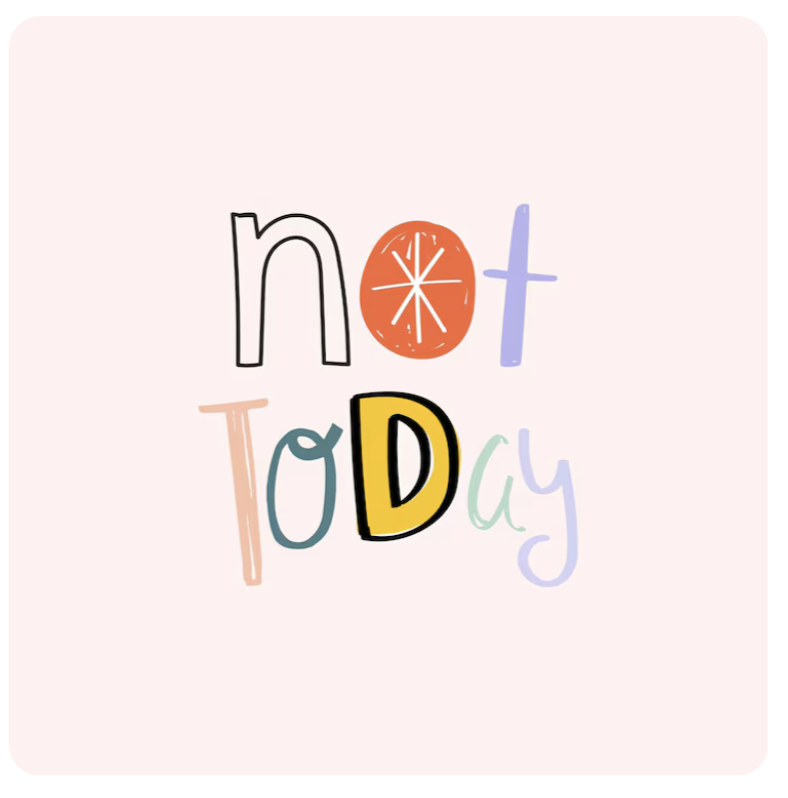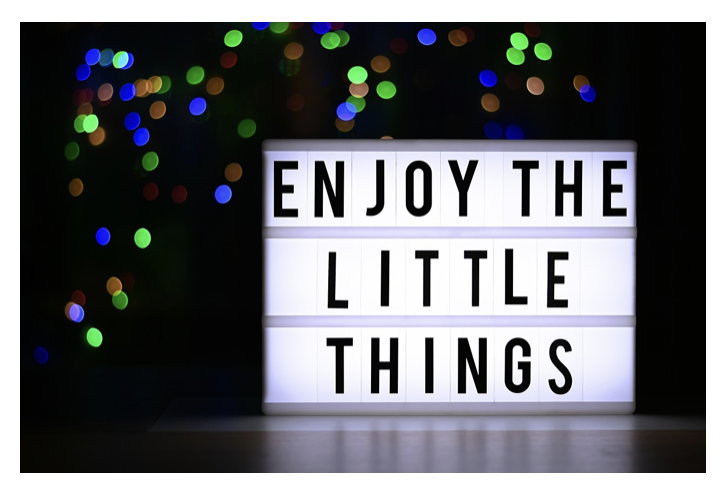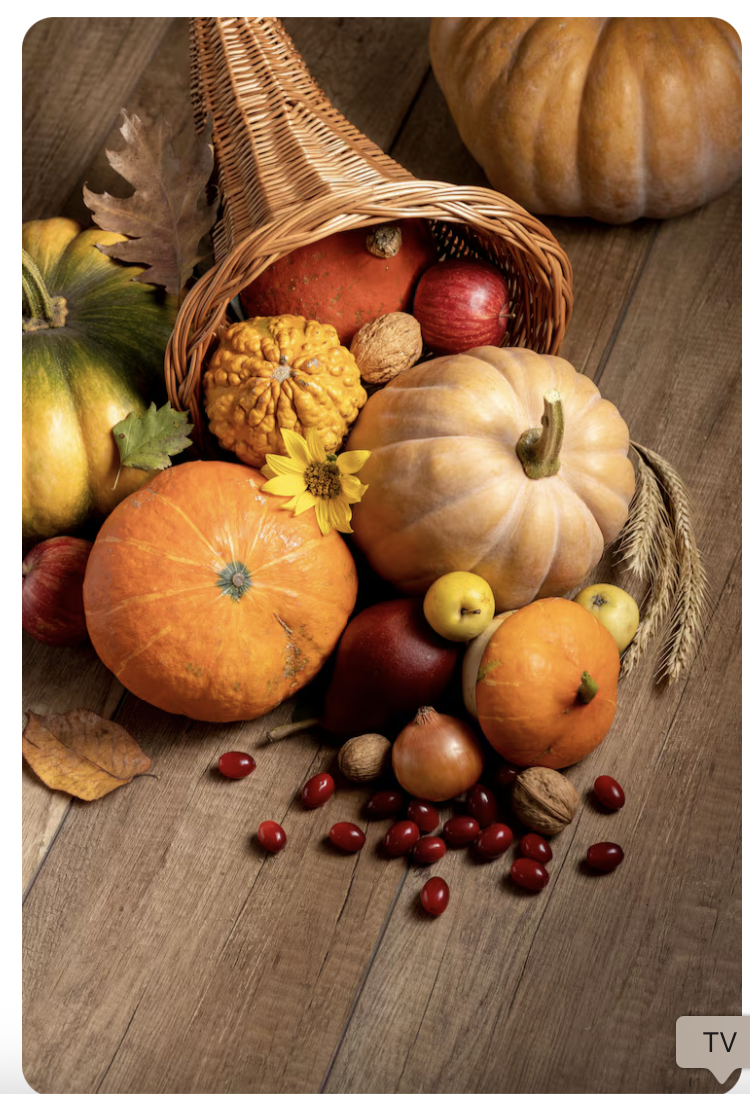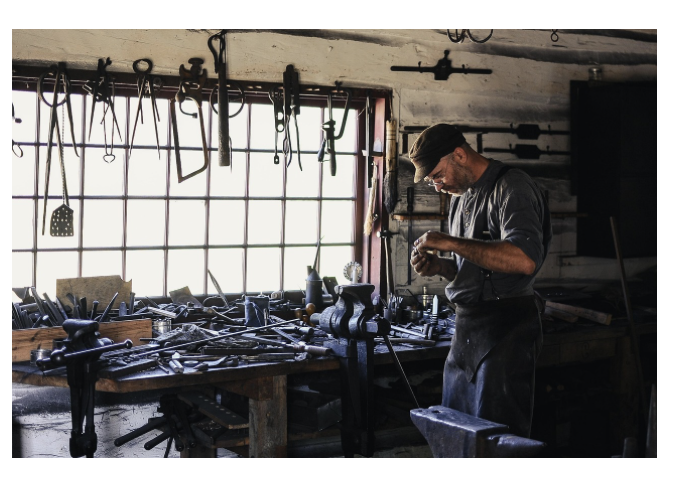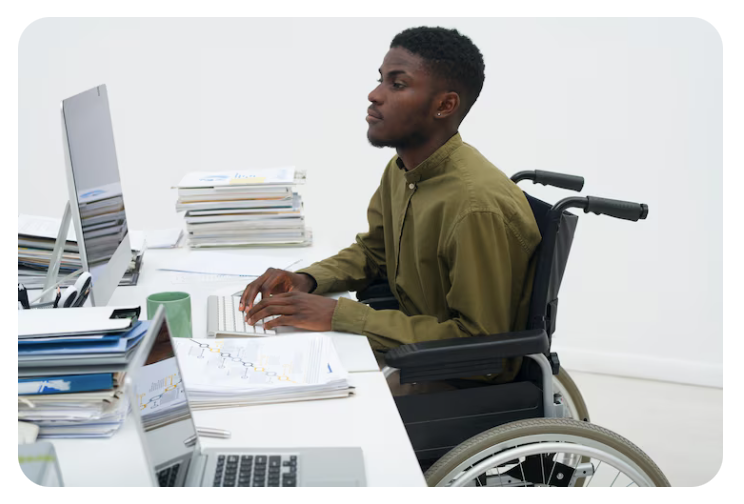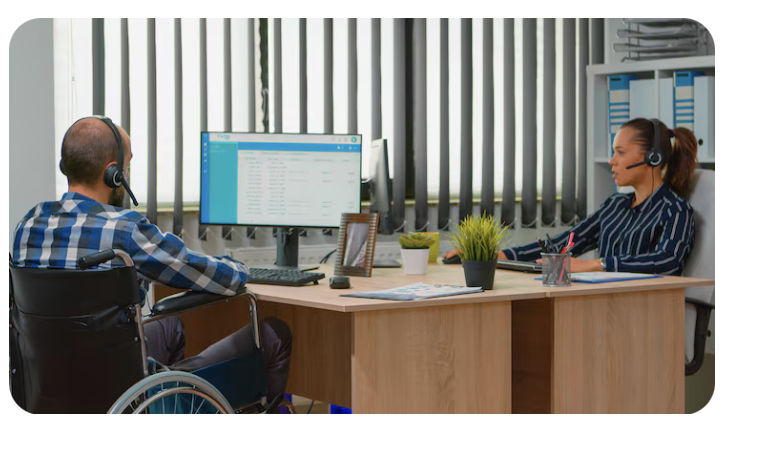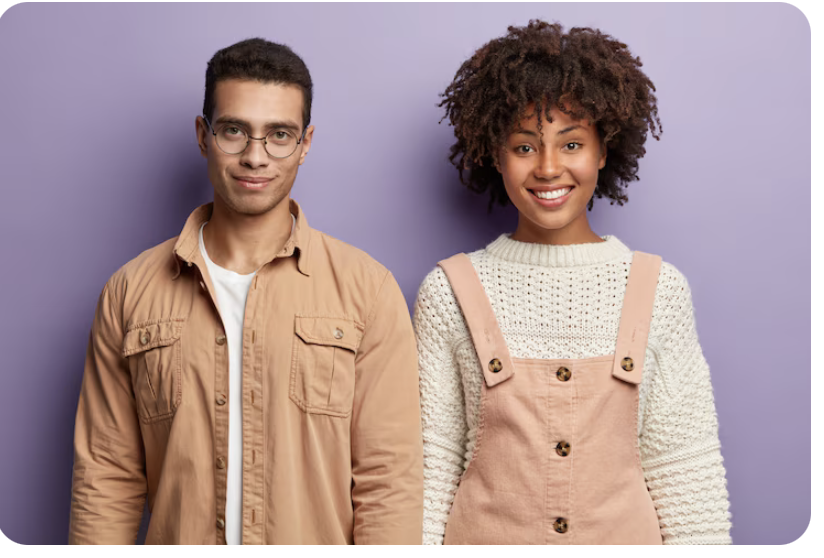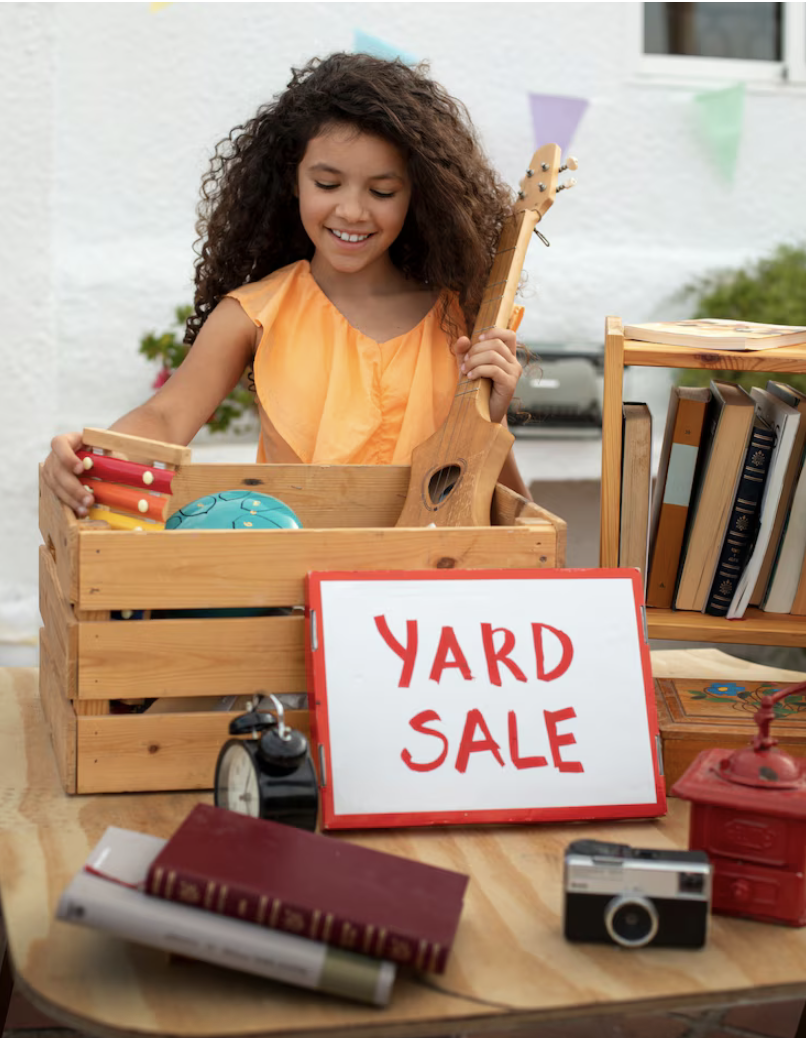God With Us—Regardless Of Ability
Photo Credit: Christmas
I remember as a young child, I had a terrible time fitting in. Christmas time probably, more than any other time of year, really drove this home! Our family was very poor, so my sister and I didn’t dress the same as our peers or change outfits everyday like most. Our clothes were often one size too big or a size too small!
NEVER FITTING IN
We didn’t socialize like others either. There always seemed to be some kind of function that we clearly didn’t understand and absolutely were not invited to! Even our lunches were different than others and ‘oh my goodness, we qualified for free lunch’! The stigma that came with that back then, was humiliating! Even having a strong faith seemed to set us apart. That was the most unsettling and least understood by my sister and I!
CHRISTMAS
And Christmas for us was a gift or two around a small tree. We didn’t come to school wearing brand new outfits or having the latest trend…of anything. For us, it was simple and forthright. It was all about baby Jesus, the Messiah!
Still, we wanted to fit in…and just didn’t. Instead we felt invisible and overlooked. We felt like we had ‘the plague’ and were often accused of having ‘cooties’ and were intentionally avoided.
CHANGE COMES SLOWLY
While times change and often attitudes as well, change comes slowly. Both my sister and I survived and have moved on! Those with disabilities however, can’t always say, ‘they’ve moved on’. Their disability has remained, even as they grew into adulthood. And sadly that leaves them feeling isolated and underestimated, regardless of the successes they have achieved!
Photo Credit Success
WHAT IS SUCCESS?
‘Success’ is subjective. What one person calls a victory, another perceives it as just ‘another moment in time’. Limitations, whether mobile, communicative, or socially, have a way of wreaking havoc on a person’s self-worth.
GOD’S PERSPECTIVE
But God doesn’t see it that way. We are each created with special gifts, regardless of ability! God doesn’t make mistakes. We are called to uphold one another and build each other up! We all have value and can make a contribution.
What’s more, as Believers, we are all part of one body and each part of the body, regardless how small or seemingly unimportant, has incredible worth! Even the tiniest toe has value. It gives balance and foot stability and is important in preventing excessive swaying and falling!
Photo Credit: You Are Enough
YOU ARE ENOUGH
Those who seem to be ‘not enough’ are often the ones who we really need—for balance and unity of the body—the church or even community! Additionally, these whom seem lesser than others are sometimes the perfect person to lead a ministry—and not only for their peers in the disability community, but others, as well! It may be perspective, personality or other quality that resonates with the right balance, even if their methodology, pace, or contribution doesn’t look like it’s ‘supposed to’.
Consider the boy in the Bible with just two small fish and five loaves of bread. Jesus blessed it and fed thousands! God’s not measuring what we bring. He’s blessing the courage, endurance, dedication, trust, and prayers which are being offered, when we ‘show up’ —regardless of perceived ability —or non-ability, and multiplies it.
BEING PRESENT
Photo Credit: Be Presnt With God
Jesus came to be present with us, just as His name describes: Immanuel. God With Us. This is God’s gift to us. He looks at our heart and wants us to respond in kind! Are we willing to ‘show up’ to be in ‘God’s presence’ even when we feel incapable of giving, inadequate of ability, or overwhelmed with fear of failure?
Presence is a more powerful tool than most think! As communities—and churches— reach out to include contributions from those who seem most likely unable to, ‘fit the criteria’— everyone benefits. It builds relationships, participation, acceptance and communication. This becomes an expression of God’s love. And when we are willing to step out in faith, even when we aren’t sure of ‘success’, and choose to be present to use the gifts we have been given, then God is also present with us.
Christmas is a special time to ‘be still and know God is God’! Take the time to stop…and be present with God, our gift back to Him.
Thankful For Small Wins
There are days when I feel like I accomplished so little, I’m embarrassed! It’s been a tough year, as I’ve navigated the humbling world of ‘grieving’. I’ve learned so much about the world around me and even more about the strength I have, which I can only believe came from God.
SOME DAYS ARE JUST HARD
But honestly, there were days that were dark and heavy. I ached, and felt lethargic, and cried. It hampered any ability I had to function normal. In fact, writing all but came to a stop. Still, most of the time I had the presence of mind, because of my faith, to remember to thank the Lord for getting me through.
It’s hard to remember to be thankful when you’re hurting, angry, frustrated, or even sad and confused. We become so focused on where we are, we can’t seem to see through it! Thankfulness in this place, doesn’t come easy, but it should.
THANKFUL IN OUR CIRCUMSTANCE
God’s Word doesn’t tell us to be thankful for the circumstance we are in, but to be thankful that He is there with us to get us through! Grieving isn’t nearly the only thing that can bring a person to their knees. There are so many, it’s mind boggling. Financial stress, illness, homelessness, fears of failure, relationships—which can be between spouses, children, or extended family members; seniors struggling with memory issues and other illnesses, and more; all of which weigh heavy on our hearts and ultimately, even create physical stress and breakdowns.
Another area where darkness tends to reside is in the world of disabilities. When our bodies or intellect doesn’t operate just the way it’s supposed to, it’s easy to become frustrated and angry with the world, and even angry at God. Even those with a strong faith can falter.
WILL IT EVER GET BETTER?
We keep telling ourselves we’ll feel better when things get better. We’ll be on top of the world when we have enough money, a new house, a promotion, a new job, or if I can ever master the world with my disability!
Our lives are not dependent on the end of a difficult season. Sometimes the ‘season’ causing all the strife isn’t going to get better, but that doesn’t mean we have to miss all the joy in life. Sometimes we just have to be thankful for the small wins we accomplish; and this applies to both those with a disability, caregivers, and those who are just having a tough time, even when it’s hard!
GRATITUDE MATTERS
But gratitude matters. Sometimes the smallest win, seems to create a bigger impact. It’s not about ignoring the challenges creating the havoc in our lives. It’s remembering to notice the small victories, like showing up; for the equipment which helps get us through the day; having a moment of quiet which allows for ‘regrouping’ and knowing you’re trying.
It’s also about living a life of acceptance and in it finding the joy in spite of the pain. No one’s life is perfect. We all have problems, although some may seem greater than others. But often we can’t see anyone else’s suffering, because we are so wrapped up in our own.
THANKFUL FOR THE SMALL WINS
But when we can be instrumental in compassion (both giving and receiving), having a connection with others and even notice the small moments of achievements as they happen each day, we can find joy. It’s about remembering that you are unique and special, and that you are deeply loved, just as you are, without any conditions. You were created by a Master hand, and that is plenty good enough, for a moment of thanksgiving!
Gratitude—Even When You Have To Look For It
It’s November. Even though the Thanksgiving ‘holiday’ isn’t officially until the end of the month, it’s the season where ‘thanksgiving’ is central to everything we seem to do. Preparations are already being made, meals planned, perhaps double checking to see what family is going to join and even some early baking.
The leaves have changed, the winds are blowing and the outside scents remind us Fall is here and Winter isn’t far behind. People often discuss their blessings and share what an amazing year it’s been even with their failures. Memories are shared and stories told, which for them is wonderful.
ARE WE THANKFUL?
But do we feel thankful every, single day? We’re supposed to and perhaps that’s the rub. Our energies or emotions struggle against it. Life is hard. Our hearts are not focused on what is good; it’s more focused on surviving whatever chaos is taking us down! We have memories that are not warm and fuzzy because a tragedy hit just at this time of year. Or there are reminders of things we used to do, but no longer can, or other emotions which just makes hearing all the ‘wonderful-ness’ difficult to swallow.
Some days even daily routines can be nearly unbearable. Then as if adding insult to injury, the small victories we have made seem to go unnoticed by others. It’s easy to feel isolated, overlooked, or even unseen when life moves differently for you.
LIFE’S CIRCUMSTANCES
All kinds of circumstances can put us in this place. There are those who are homeless, (I think of all those who just endured Hurricane Melissa), those facing financial burdens, medical issues like cancer and what seems like hundreds of other kinds of illnesses, accidents, loss of loved ones, relationship failures, those who have disabilities and the list could go on.
ALIGNING OUR HEART
It’s when we place our heart in alignment with our Creator that we can see through it. With every challenge, step, and breath we take, when we can put God in the center and be thankful for even the smallest mercies, our heart can warm to gratitude.
FINDING REASONS TO BE GRATEFUL
An article I read recently was listing reasons why the author, even with her disability, was grateful! The people she met, her ability to grow resourcefully and become a problem solver, not taking life for granted, her new found passions, and so much more, gave her life and her heart balance.
Some have found 'intentionally practicing gratitude' has helped them to see life as purposeful and joyful, despite any limitations. The author intentionally writes something down everyday which reminds her of unique things for which to be grateful. Some of these includes the ‘gift of sound’, technology, a good hot cup of coffee first thing in the morning, sunshine after a rain, and so many other things, that before she had hearing loss, she’d always taken for granted.
CHANGING OUR MINDSET
Life is going to knock us down. We are all going to face disappointment. But when we can look at these adversaries straight in the eye, and refuse to cave to self pity, anger, resentment or bitterness because of a disability or whatever we feel life has given us unfairly, we are likely to recognize much of our feelings are generated unequally. Stuff happens, and not always in our favor, but an intentional (and honest) heart of gratitude can, if nothing else, ‘change the color’ of how we see the situation and perhaps our world.
Changing our mindset is a little like watching the leaves change color on the trees. It’s a gradual thing; not something we really planned on, especially since we don’t like ‘where we are in life.’ It’s just our life. Still as the leaves turn color, there is beauty that wasn’t there just days ago. Before our very eyes, the world is a stunning blanket of oranges, reds, yellows and other colors that can take our breath away.
SEE THE BLESSINGS AND BE THANKFUL
When we give in to gratitude, our hearts change like the leaves. It wasn’t what we planned. But something grabs hold and won’t let go, so that instead of seeing all the negativity in our ‘space’ or world, we’re suddenly seeing with a new heart. We see with new awareness what we'd have missed if we hadn’t listened to that sweet, small voice within us. That voice… that causes us to ‘give thanks to the Lord, for He is good!’
The world isn’t perfect, People aren’t perfect. But each is a gift. It’s how we respond that matters.
Gratitude When Life Is Hard
Pain and suffering are a fact of life. There isn’t a person walking the face of the earth who, if honest, can say they’ve never experienced any kind of hardship in their life. It varies from person to person, but it still exists. There are those who genuinely seem to have everything they need, perfect health, great relationships, and that all is right with the world. But I wonder, is that truth?
LIFE IS HARD, BUT I’M GETTING BY
There are others, somewhere in the middle of this conversation who admit to having issues in some sense, whether it’s financial, emotional, or relational. Some may be experiencing the loss of someone they care about, been in a failed relationship, or finances have left them strapped and working two jobs just to get through. Still, they’d likely say, life’s hard, but I’m managing!
WHEN GRATITUDE IS NOT EASY
Other times you may meet someone who feels down on his luck, homeless, health quickly fading, or in some cases a person who is disabled, and consumed by their disability and feel life just handed them a bad call, and having gratitude feels hollow when the body (or mind) refuses to cooperate!
Even recognizing they have the right people in their lives who want to help, and glad to have what they do have, they question if being grateful is a good thing. They wonder if the attitude of being grateful is unhelpful in their own circumstance. It can ultimately make them feel angry because they feel overqualified or deprived of the opportunity to use their talents in a more positive manner. Some call this ‘toxic positivity".
GRATITUDE IS A GOOD THING!
Most of the time, that isn’t the case, however. Most of those with a disability fight hard to make their life as ‘normal’ as possible in spite of their disability. They hold jobs, have families, and are even involved in their communities, often admittedly, with the help of friends and family. They have accepted their life with a degree of thankfulness that helps them face day to day experiences, even when life is hard. But in the face of physical pain or lack of ability they recognize it isn’t pretending the pain is gone, but trusting that God is good —even when life hurts.
HELPING OTHERS
Or, there are those who have found a way to live a life of incredible positivity by helping someone else. They use their own story to change the lives of others and are thankful for the opportunity to do so.
Those you may immediately recognize are Helen Keller who lost her sight but was hugely impacted the world around her. Or Stephen Hawking from the Science world, and there are plenty more. Michael J. Fox has made a huge impact in the world of Parkinson’s Disease. Bethany Hamilton survived a shark attack but lost her arm. As an avid surfer competitor, she was back in the water and training in about a month and still competes! Additionally, she leads motivation courses based on her own incredible story! Again, there are many more who use their circumstance to brighten the world around them.
JUST WANTING TO BE HEARD
We all have days of asking ‘why me’? We wonder what we’ve done to earn such a life of non-ease, and fierce challenges. Mostly what we want isn’t to drag ourselves down or those around us. Usually we just want to be heard saying that life is hard….but know that we’re going to get through it, because we have a piece of our heart, that doesn’t want to give up!
We want to face the challenges head on, and sometimes they just beat us up! With inspirational stories like those mentioned, we can recognize we all have immense potential, regardless of our abilities or lack of! With all the technology and information available, if it’s searched for credibly, provides resources to build stamina, grow ideas, educational options, and people in the know who are ‘all in’ to help if (or when) help is asked for.
ALWAYS A REASON TO BE THANKFUL
Gratitude when life is hard can be challenging, there’s no doubt about that. Sometimes life feels unfair, isolating or even endless. Feeling thankful seems out of the question!
Even knowing that, when you can dig deep down into your soul and see the greatness you possess, the talents God has given you, there is reason to be thankful, even when life is throwing curve balls!
Our Creative Christmas Abilities
It’s mid-October and I’m thinking about Christmas! The Holiday season is a mere 2 1/2 months away! I admit, I’m not one of those people who have shopped all year and am already prepared. Nor am I one who has started shopping at all! Still, it seems just around the corner, as I realize there are merchants already in stores displaying Christmas decorations for sale.
Even though I haven’t officially ‘started’ yet, surely giving it thought can’t be a bad thing, especially if I’d like to get creative in some way! Handmade gifts, after all, take time to not only begin, but finish!
CHARLES DICKENS WITH CHRISTMAS CREATIVITY
‘A Christmas Carol’ by Charles Dickens often comes to mind when I think of ‘Christmas Creativity.’ Mr. Dickens’ creativity wrapped in this story is in some ways profound. He uses three ‘Christmas Ghosts’ and a crippled (disabled) child to remind us what Christmas isn’t about; and certainly what Christmas is. It’s a time of love and sharing, and while it doesn’t mention it, it’s also the story of the Christ Child who is the Living Breath of love and giving!
WE EACH HAVE A PURPOSE
In our very modern world, being disabled can have all kinds of negative connotations. But in reality God has provided each of us, regardless of ability, with a sense of purpose. As we focus on what we can do, much like Tiny Tim in ‘A Christmas Carol’, who melted the heart of Scrooge himself, suggests we can do the same with whatever gifts we’ve been given! God’s creativity certainly isn’t limited by our inabilities!
EMBRACE THE HOLIDAY
But as the season draws ever nearer, the idea of adapting and improvising to fit in, can be staggering, depressing and cause pure frustration, if we allow it. As hard as it may be, embracing who we really are can create an excitement in life that helps us see beyond what some people choose to see about us; only our flaws or a disability!
While a physical disability is more likely to be noticed than someone who has an ‘invisible disability’, both require using a bit of creativity to generate inspiration to keep moving forward, when hiding from life seems easier. It may mean joining other creatives who want to explore the season of giving and sharing, or doing some searches on line to find like minded people who are using their disabilities in creative ways Other solutions for creativity can be found if searched for in the right places.
USING OUR GIFTS
Using our talents at Christmas is often how we prefer to give gifts. It’s a greater expression of who we are and shows a ‘love language’ only we can generate. If art is a gift you’ve been given, whether it’s creating pieces freehand, or art created by ‘painting by number’ it’s an amazing gift, completed by the giver.
The satisfaction and heart filled with love through the action of ‘creativity’ creates a connection between people but also can offer better mental health, even for the person with a disability. This creates increased self-respect and reduces levels of depression and anxiety, which can run rampant during the holiday season!
Other ideas include creating hand sewn gifts, homemade sweets or other food products, crafting gifts, videos, or even making a reading video for a child accompanied by the book you are giving (or reading your own book —or manuscript you’ve written!) Perhaps attending a pottery class, creating Christmas cards or small ornaments or a hundred other ideas are available, if a person is willing to do a little searching related to what interests them, and the person to whom the gift will be given.
CHRISTMAS IS FOR EVERYONE
Christmas is the season for everyone. The excitement is almost palpable. Cheer and goodwill, Ebenezer Scrooge learned, is better for everyone when the Holiday is embraced. It may not be perfect, but it can lessen the pain and inspire the heart when we can give of ourselves to those who need us.
While a disability may require the assistance of others from time to time, giving back through a creative endeavor, no matter how small, can not only fill your heart, but melt the heart of someone else, a little like Tiny Tim melted the heart of Mr. Scrooge!
SHARE YOUR LIGHT WITH OTHERS
We are each given God’s Light to share! Perhaps this is the Christmas you can say as Tiny Tim said in “A Christmas Carol” to someone who just wants to say ‘Bah Humbug, I want Christmas done,”….. “Merry Christmas and God Bless us, Everyone!”
Embracing the Digital Nomad Lifestyle with Confidence and Accessibility
Photo via Pexels
Thank you to Claire Wentz, our amazing guest author this week. She continues to offer stellar articles for this site, and I am exceedingly grateful! Enjoy!
Becoming a digital nomad is about more than swapping a desk for a passport. For individuals with disabilities, it’s an adventure layered with unique challenges and opportunities. The appeal is obvious — freedom to choose your workspace, exposure to diverse cultures, and the flexibility to design a lifestyle that aligns with your needs. Yet the road to remote work from anywhere isn’t as simple as booking a flight and opening a laptop. It’s about anticipating obstacles before they arise, building systems that make travel sustainable, and understanding how to navigate unfamiliar environments without compromising comfort or safety.
Streamlining Your Business Operations
Running a business on the move comes with its own challenges — especially when you’re balancing work, travel, and accessibility needs. Choosing the right legal structure can make a big difference in how easily you manage operations. Options like LLCs or sole proprietorships each have their own benefits, depending on your goals and resources. With modern tools, you can register your business, handle compliance, and stay organized without being tied to one location. By simplifying your business formation process, you free up more time and energy for the work you love and the adventures you pursue.
Accessible Destination Planning
Before committing to a location, the accessibility of the environment needs careful evaluation. It’s not just about wheelchair ramps or elevator access — think transportation systems, public facilities, and even the terrain in everyday neighborhoods. Instead of jumping straight into a long-term lease, test the waters. Try shorter stays in destinations that have proven inclusivity records. Cities recognized for universal design can transform your experience from stressful to seamless. Researching in advance allows you to avoid costly and exhausting relocations. When you invest in inclusively designed cities, you set yourself up for a smoother transition and a more enjoyable stay, letting you focus on work and leisure instead of daily access struggles.
Assistive Tech & Workspace Setup
Your tech stack is your lifeline. Beyond your laptop and phone, incorporate adaptive equipment that keeps you efficient and comfortable. Voice recognition software, ergonomic peripherals, and screen magnification tools can make a world of difference in productivity. Portable items like foldable stands or adjustable keyboards ensure you can maintain your preferred setup in cafés, co-working spaces, or hotel rooms. Think of it as creating a mobile command center that travels with you. When you equip yourself with adaptive tools, you eliminate small friction points that could otherwise pile up into major barriers.
Travel Advocacy & Communication
International travel introduces situations where you’ll need to assert your needs clearly — sometimes in environments with language barriers or unfamiliar policies. Preparing an advocacy kit helps you navigate these moments. This could include a translated medical summary, documentation of your access requirements, and laminated cards explaining your needs concisely. Such preparation not only speeds up problem resolution but also reduces emotional fatigue. Understanding your rights in different countries is equally important; not all accessibility laws are created equal. By learning to advocate effectively with documentation, you give yourself both a voice and a shield in challenging situations, making your travel more secure and less stressful.
Emergency Planning & Insurance
Unexpected situations are part of travel, but for digital nomads with disabilities, preparation is non-negotiable. This means selecting insurance plans that explicitly cover disability-related needs, mobility equipment, and pre-existing conditions. In many countries, standard travel insurance won’t go far enough, so reading the fine print is critical. Keep digital and printed copies of your policy details accessible in case of emergencies. Developing a response plan for medical situations — including knowing the location of accessible hospitals — can save you precious time. Before you leave,verify disability inclusion in your coverage so you’re never caught off guard in a crisis. The peace of mind this offers will let you focus on your goals instead of the “what ifs.”
Community & Social Support
The life of a digital nomad can be socially rich but also isolating if you’re always moving. That’s why it’s vital to intentionally build a network. Look for online communities and local meetups tailored to disabled travelers and remote workers. These groups can be a source of practical advice, emotional support, and even new friendships. Surrounding yourself with people who understand your experiences can make transitions smoother and less lonely. When you join disability-inclusive nomad communities, you tap into a well of shared knowledge and mutual encouragement that keeps your journey vibrant and connected.
Becoming a successful digital nomad with a disability is about designing systems that put you in control. From the cities you choose to the tech you carry, from the insurance you secure to the communities you join, every decision shapes the quality of your journey. The beauty of this lifestyle lies in its adaptability — you get to decide what your “normal” looks like.
Discover the heartwarming world of ‘Paxton and Friends’ at Margie Harding’s website, where stories of inclusion and inspiration await readers of all ages!
Farming For Improved Quality Of Life
Fall harvest is an exciting time! Gardens are filled with the last bounty of the year and gathering all the fruits of your labor from the summer is exhilarating!
Children going back to school is another way harvest can be celebrated. It doesn’t matter whether it’s a public or private school, online or even personal education (as an adult). It’s the idea of taking what’s been already learned (harvested) and planting new seeds; and growing more! Increasing what we learn every day, or year, and getting a good harvest, is important. That is how you move to the next grade, or level.
ENHANCING QUALITY OF LIFE
When considering the Fall harvest, especially from our personal gardens, with fresh fruit and vegetables, our bodies respond positively to the generous amounts of vitamins and minerals which have not be altered by pesticides or other chemicals.
COMMUNING WITH ANIMALS
Studies have shown that a person with a disability can increase their quality of life by means of ‘harvest’, emotionally and physically, by working in an agricultural setting, via farms, ranches and other venues dedicated to growing their own produce. This environment enriches lives in surprising ways, including access to nature and the opportunity to interact with animals, while learning how to sustain good health through farming.
A SENSE OF COMMUNTIY
Further, the sense of community garnered from such a lifestyle is enabling, as it offers the opportunity to learn about responsibility and creates interactions with others. Additionally it may lead to a source of income, depending on abundance in the harvest, what kind of produce is grown, the livestock, or even selling eggs from chickens or ducks, if that is part of the farm or ranch status.
STAYING BUSY
While it’s true farm work can be strenuous, it’s also very healthy! The physical labors involved in working on the farm require dedication, understanding of what you are doing, and the building of muscles—some of which are rarely used regularly, except in this environment. From chopping, lifting raking, or a hundred other things, it can be tiring, perhaps even exhausting by the end of the day. And you must do it every day, to be fruitful.
CREATIVE ACCOMODATIONS
Photo Credit: Disabled farmer
Of course there are accommodations which may need to be altered, depending on a specific disability, and that can be totally done, even if a bit of creativity is required! But the energy used to finish tasks can be such a rewarding accomplishment at the end of the day. It’s one of those times that is described as a ‘good kind of tired’! All of this then, contributes to improved sleep!
As you interact with nature, spend more time out doors, commune with the animals, harvest fruits and veggies naturally, your health is likely to become more in tune with what it’s supposed to be!
Add to this, it’s probable, when it comes time to snack, or eat a meal, you’re going to be more satisfied by enjoying some of the fruits of your labor instead of the surgery, processed and packaged ones! It doesn’t mean all problems may necessarily be 100% solved, but there will likely be changes, and it does lessen the stress in trying to maintain.
Photo Credit: Farm Life
FOR THE DISABLED, SENIOR CITIZEN AND THE ABLE BODIED
While farm life may not be for everyone, those who access it, like those with disabilities, senior citizens, and even the average non-disabled man or woman, may find it leads to medications being exchanged for a new lifestyle of fresh, organic foods. Additionally, you may rid yourself of anxious energy; gain exercise that would normally not be complete; and have interactions with God’s world that can ground you, as you watch your quality of life improving. It can create a feeling of productiveness, allow freedom from much of the drama of the world, and give a sense of peace not thought possible. Where will you begin?
Cooking Despite the Hurdles
Kids are back in school, the days are getting shorter, leaves are changing colors on the trees and we have cooler nights. Fall is in the air! With all this set up, it’s also time to begin thinking about cooking all those wonderful smelling, and yummy tasting comfort foods!
As we are drawn indoors because of the change of season, we don’t want to forget about those wonderful ingredients that are unique to the garden this time of year. Foods like pumpkins, apples, squash and root vegetables.
I don’t mind cooking, but it’s not my ‘love’, but I like to eat. I like that it’s the season for soups, stews, and casseroles, warm breads and other slow cooker meals which provides amazing smells wafting through the house with a fair amount of ease.
There seems to be quite the range of ‘cooking levels’. There are those who live to cook, those amazing chefs who create incredible and exquisite meals. Then there are those who enjoy cooking for their families and honestly enjoy spending time in the kitchen. Others like me, are quite adequate at cooking, but cook mostly because eating is a ‘need’ of survival, even though there are days we do enjoy what we’re doing and loathe the idea of eating out often. Then there are those who don’t like to cook at all, and prefer eating out whenever possible.
Photo Credit: Cooking while disabled
There is another level of cooking many never (or at least very little) have given thought to! The elderly or widowed person; or especially one with a disability has a unique view on cooking depending on their disability. Sometimes, it may be a person in a wheelchair, or someone whose ability to stand is limited, who suffers from arthritis, or even sight related. Sometimes it’s a arm or hand that creates a handicap, and there are other very diverse reasons where cooking becomes a struggle.
There are ways and hacks to circumvent some of these drawbacks to working in the kitchen. Begin with these and add your own as desired!
Photo Credit: Prepping Food
Make list of what you like to eat.
Note those on the list which creates hurdles.
Make special notation on what accessories you may need to complete these.
Make a list of those ingredients required to make your favorite dishes.
Shop as needed; use ‘home delivery’ if available
Create a list of preparations you can make well before you plan to cook.
Prep as much of each dish as possible when you feel your best.
Ask for help if necessary.
There are tips online on how to use a stove from a wheelchair or using a small portable stove. Additionally there is much information on using the microwave whenever possible. Others suggest using cobblers as a simple dessert using fresh, frozen or canned fruit. If preparing a large amount, consider splitting it up into several pans to aid with weight and preserving. Using muffin tins to create single serve portions is yet another incredibly helpful idea.
Photo Credit: Enjoying Food
While attending to all the short cuts, easier way of doing things, one of the greatest thing you can do for yourself is to remember gratitude in even the small things; remember to take rest, and accept help or aid from those around you.
You are a very special person, regardless of circumstances. Eating is necessary for survival, but exotic cooking is not required. Sometimes it’s necessary to say, I’m not cooking tonight and just place a frozen meal in the oven, including but not limited to, a pizza or other favorite dish.
Recipes which are created for ease if needed for those with a disability, an elderly person, or even the widowed or those who live alone, are available. Use these ideas, and rejoice in our very human need of nurturing our bodies.
Finding Motivation To Learn
I consider myself a ‘life long learner’. It excites me when I can sit down with a subject I’m interested in and just study it for a while. Even note-taking can cause a level of satisfaction, even when I don’t have a clue if I’ll ever necessarily use the information, other than for the sheer joy of being interested and learning it!
However, when I find myself with a topic in front of me in which I have no interest, staying focused is almost impossible! I struggle with what I’m reading, with the explanations, even the graphs and pictures inserted so as to help understanding. Staying motivated to pick up the material again to study further just…..doesn’t happen.
LACK OF INTEREST MAKES LEARNING HARD
When I think of my own lack of discipline when I’m not genuinely interested in a subject, I’m drawn into what it must be like for a child who is learning about things, where genuine interest is almost non-existent. This is perhaps even more so for the child with a disability, whether it be autism or other intellectual inabilities.
Further, learning can become even more cumbersome when a child begins comparing himself to others; or when others compare his learning with theirs and verbalizes what they consider inadequacies. Comparison from either side steals joy, and is so unhelpful! And, it creates an emotional fatigue and kills momentum.
INCREASING SUCCESS
Studies have shown when we learn out of curiosity, interest and self-determination, we are more likely to have success. When the learning is derived from a sense of satisfaction from an activity related to a subject, we will likely display a higher sense of accomplishment. These finding are also true for the child with a disability.
In fact not only is this finding relevant, but others have found, that some students can actually learn to motivate themselves in the face of academic challenges, as they learn about themselves through their academic journey.
KEEP MOTIVATION HIGH
Keeping motivation high is key, however. Many children need a giant boost in self-esteem to keep them trying; especially when something new is attempted. One key component is to make sure recognition is prevalent, even when their progress seems limited and extremely gradual.
Some educators promote reward charts; or even token reinforcement But one of the higher challenges for teachers is to have a great desire to make sure learning is fun. Creating an environment which includes trivia games, a singing game, memory challenges or even a trip outdoors to examine nature up close and personal, can make learning a motivational experience.
Including art projects related to an ongoing study, or research via the internet (like Pinterest or Cosmos), or a movie or other platform which encourages learning in a non-traditional way, can also, be very useful.
Other children can learn and stay motivated through self-expression and opportunities which promotes play therapy. Allowing them to help choose the activity, increases success. One example of learning through expression is music therapy, which can aid in social interaction and ways to adjust to sensory stimulation.
ALL CHILDREN CAN LEARN
All children can learn, even those with diverse needs, when instructional designs include a variety of options in ways to learn. When teachers have autonomy over their classrooms, which enable to them help the students ‘where they are’, and using their interests as springboards, the success of the students will increase. Certainly more research is needed to enhance what has already been shown to aid in teaching, but a good dose of positivity is always a great place to begin!
Changing Season: New Challenges
Autumn. What a wonderful season. The colors changing all around us creates a breathtaking canvas. The trees shed their leaves, the days shorten, and the air assumes a definite crisp. The earth is preparing for winter rest and the eventual spring renewal.
This transition of rest can also be a time of slowing down for we humans, as well. As the days shorten, we find ourselves finding there is less time to work outside with darkness closing in, so we retreat into our homes, where electric switches changes darkness to into light. We too, are preparing for another season.
Even as we bask in the beauty, many of us will recognize chronic pains seem more prevalent, arthritis becomes more profound and mobility issues can have us reaching for the safety of our warm homes.
These types of challenges can happen to anyone, but it’s even more likely to be present in the lives of those facing a disability. After my husband was shot in Viet Nam, he often commented on how his arm or leg would ache as weather moved in. Those who have knee or hip surgeries also, are often affected by the colder temperatures.
Needing help during this season is not a weakness, it becomes community! What a great time for folks to pull together to help with raking leaves, winterizing homes or finishing any outside work that requires physical labor. Sometimes our bodies just don’t want to cooperate to accomplish tasks we are comfortable doing when the weather is warm. We weren’t created to do life alone!
It’s also a good time to remember that those with disabilities may struggle with getting to a Fall corn maze, the pumpkin patch or even picking apples. But what a grand way to include someone in these uniquely autumn events. Even just a stroll in the park to see God’s coloring book is a great way to share ‘community’ with those who are a little challenged by such outings.
Having fresh pumpkins is the perfect time to carve or decorate for the season as well as, using the fresh flesh for baking! Pumpkin pies or cookies, streusels and breads are always on the list for yummy eating. There are hundreds of different ways to use this amazing fruit and it’s highly nutritious as a bonus!
Perhaps after collecting apples, there could be an opportunity for making apple cider, applesauce or even apple cinnamon playdough. If different varieties are available, have a ‘taste testing’ event to understand the different flavor of the apples, are also an option.
Children with disabilities also, should be considered during this time of year. As one mom with a child in a wheelchair points out, cooler weather presents all sorts of challenges. From navigating the cold and flu season, to making sure equipment doesn’t fail, is important! But inclusion in activities is vital! She describes his delight in being pushed in his wheelchair through the piles of raked leaves, despite his inability to run like other children who jump in them with abandon!
As the weather continues to change, putting puzzles together or even watching a movie together is a way to help a neighbor who may feel isolated because of a disability, or even aging! Picking up groceries, clearing a sidewalk, or taking out the garbage are other ways to continue the fall/autumn theme of ‘community’. Be creative and perhaps you could make life just a little easier for a neighbor.
Difference Is Not A Hinderance
Labor Day; the ‘unofficial’ end of summer. School has already started for many, and some students went back two or more weeks ago and Fall is just around the corner with cooler nights, colored foliage on the trees making autumn one of the most appreciated seasons of all. The vibrant colors of gold, red, rust, orange, yellows and browns with the sprinkling of ever green trees can cause a forest to be a breathtaking sight!
Yet, the events that led up to that first Labor Day celebration, was anything but beautiful. It was a time of high unrest as workers fought against poor labor conditions in the workplace. Labor strikes were prevalent and often incited violence rather than the welcoming floats and grandness of marching bands which we see now.
LABOR DAY ORIGINS
It wasn’t until 1894 when President Grover Cleveland dedicated the first Monday in September, as a day set aside to recognize the contributions people made in the workplace. Better wages with hours better regulated and other improved working condition were celebrated.
Even while all this is true, it didn’t seem to apply to everyone. It’s been an ongoing battle for the disability community for decades. Federal laws are still being created and implemented, to better help those with disabilities to obtain meaningful, innovative and positive employment conditions.
THE DISABLED EMPLOYEE
The disability worker launches into a workplace world which accepts him often begrudgingly. Only after an excruciating desire exists to work through the mire, which demands a ‘never give up attitude”, and strong ambition to become productive and self-supporting can the disabled person even acquire employment in their desired field. Inclusion in the workplace becomes a hugely collaborative and intensly difficult journey, despite their qualifications!
It isn’t uncommon, even now, that the individual with a disability, upon entering the work force is required to offer documents with detailed information about their disability from doctors, and setting up appointments to coordinate with potential employers who dig deep into personal heath conditions just to be able to report to work! As one person put it, it’s "an incredible art of over-share".
WORKING MATTERS
It isn’t always about the perfect job with the huge paycheck, although that helps! It’s about dignity, contribution and emotional fulfillment. It’s about believing ‘they can’ and the desire to make it happen! Being seen, included, and accepted as someone who has what it takes to join the ‘team’, is vital to living a full life.
Far too often, those with disabilities, are left feeling abandoned by society and invisible in their workplace. Their worth is less than of their non-disabled counterparts and ‘missed’ when promotions are given.
However, just like every other employee within the framework of any type of industry, the disabled person matters. They have skills and talents which are often overlooked. This can cause frustration and burnout as they fight to prove themselves, again and again.
EVERYONE HAS SOMETHING TO OFFER
While it may be true some adaptive changes may be needed to be applied to make the workplace a bit more manageable, each person has something valuable to share. The challenges do not outweigh the desire and ability to complete the task before them.
The entrepreneurial spirit of the American worker still lives today. The disability community recognizes first hand the benefits of having a problem-solving nature, given their personal struggles whether it be physical, or other disability.
Disability does not mean inability. It just means the ability to do something differently. It may even be innovative to the point of increased potential if ‘the powers that be’ are willing to allow those who want to work the opportunity!
Not everyone fits into a round ‘peg hole’. Sometimes it requires resizing, reshaping, or totally rebuilding. But given the chance, the disabled person desires and is willing to work in a world where their difference, is not considered a hinderance!
Photography Through A Different Lens
Photo: by Raegan Davidson
One of my sons is not only an outstanding painter; he’s also an amazing photographer. He can take a photo of an object and depending on the angle, lighting, background or other significant element, it leaves a stunning impression. One of my granddaughters also has a gift for capturing breathtaking photos, and hopes to use her skills as photographer in her career choice.
Over the years I have taken hundreds of photos. Maybe thousands. We had five children and of course, photo memories were mandatory! We have seventeen grands and yes, they too, get photographed. I’ve taken pictures to document travels across the USA, Hawaii and several different cruises. I’m documenting the current build of my house, our animals, rivers and mountains, weddings, graduations and almost everything in between.
World Photography Day 2025
On August 19 (yesterday) people around the globe celebrated World Photography Day. This day is set aside every year to encourage photographers to share a photo they’ve taken which defines and captures the essence of their world.
Photos are a life line to the past; moments in time forever captured to enable us to actually ‘see’ an event that happened decades ago. But it begs the question, ‘Who can take photos?’ —- The simple answer is anyone with a camera (or even an iPhone in our modern world). But maybe the question should be ‘Who can take good photos?’; those kind that catch a person's personality as a fighter, or of strong determination. Perhaps it’s defiance that shows up, or the look of serenity and goodness.
Personal Photo taken in 2013, South Dakota
Up Close and Personal
Most would tell you anyone who is trained or willing to learn, can be a photographer. I tend to agree, but what about those photos that take your breath away, perhaps in an active sport or those of, close up wildlife? These likely take a special passion and desire to create something unique and beautiful, along with training and learning the skill.
The very idea of creating artistic quality work of wildlife certainly would require someone athletic, and able to manipulate spaces and areas no one else could go….right? While that might be right, it’s very one sided and narrow minded. There are photographers who work solely from a wheel chair or have another disability which limits their accessibility. But limitations do not quell their passion and desire to create something stunning and of extreme high quality. Time and again, these unique photographers are proving this form of art can be accessible to all. (All that said, my photo of the buffalo is being at the right place at the right time!)
Adaptive Photography Equipment Is Available
Our culture often looks at photography from a perspective which limits the possibilities of those who just want an equal chance at fulfilling their dreams. It’s totally possible despite the challenges. Some fight social barriers, while others fight physical inhibitors. Concessions must be made to accommodate whatever disability is being confronted.
While passion and the desire to create stunning photos can be a driving force, there is a certain amount of creativity on how this might be done, if a person has a disability, given the weight of cameras and other gear, to make their dream come to life. Practical adjustments can be made with modified shooting techniques, adaptive photography equipment and camera gear designed for each situation. It can take resourcefulness, determination and sometimes just plain ‘ole grit to make it happen.
Seeing With Eyes and Hearts
Photography is about preserving what the eye has seen. It’s also, however, about seeing beyond the eyes, and seeing with the heart. By attacking the limitations created by any disability head on, with complete positivity, those who choose to pick up the camera and ‘create stories that have no words’ are capturing spectacular moments in time, one snapshot at a time!
A perceived limitation does not hinder God’s creativity in any person. In fact, often times, a different perspective from a private journey can enhance the depth of any photo. The unique perspective of a person with a disability is an opportunity to discover photography through a different lens!
Relaxation Day Is For Everyone!
There is an enormous amount of information available which indicates taking time to rest is not only a good thing, it’s a necessity. It’s even stated in the Bible as a command! This time of rest gives our bodies the ability to ‘catch up’ on all the energies used throughout the week! It’s a necessary rejuvenation that is scientifically proven. that will help keep us healthy and at our best when done each week!
Physical tiredness, social media drama, emotional exhaustion and other kinds of tiredness sneak up on us and play havoc with our immune systems.
I’m the first to admit, that slowing down, even for one day can be a struggle. It honestly must be a decision, because otherwise I could just keep going and going…likely until I drop or get so tired, “I’m stupid”. I’m one of those odd souls who when I become exhausted, my brain essentially shuts down. I start doing things that are totally wrong! I talk backwards and correctly! (That takes ridiculous effort when I’m thinking straight!), I don’t process normal things right; like putting the toaster in the fridge, or other weird behaviors.
SCHEDULE TIME TO REST
All that said, I was surprised to discover there is a day set aside as 'Relaxation Day" — August 15, to encourage everyone to take a day and just relax. It’s considered a ‘fun’ holiday; not on the calendar which is designated as a ‘Federal holiday’, so no one gets to take off mandatory work, but it does encourage a time set aside to rest! —But alas, just one day a year is hardly enough to allow anyone to actually benefit, long term, from taking time to rest.
Stress management can be an area where many of us falter. We keep battling, thinking we’ll get through the difficulty until we push ourselves to the point of high blood pressure, heart problems or any variety of other illnesses. This applies not only to caregivers, but also those with disabilities. Keeping calm in different circumstances can be extremely difficult if we aren’t prepared with ways to manage it, making it even more difficult to manage small, every day events.
RELAXING CAN BE HARD
Many of us struggle, or simply don’t know how, to relax and step back (or say ‘no’!), because we have the desire to be the best we can be, as we fight to climb the corporate ladder!
Life in general can be stressful. Between work, our social lives, children, (or grown children taking care of aging parents), demands for society, committees we’ve agreed to work with, education, and a long list of obligations we’ve inadvertently put on our plate until it’s running over in 103 different directions, leaves us going until we're totally burned out!
The dedication of caregivers for children with a disability; or grown children caring for aging parents, are rewarding, but can be incredibly challenging. Between therapy scheduling, the personal attention required, and medical needs being taken care of, caregivers are maxed at energy level requirements every day! This ‘fun holiday’ can lead to a reminder to ‘schedule’ in personal time to recoup from the exhaustion and overwhelming feelings which can sometimes cloud any given day. This would be highly deserved self-care!
OUR IMMUNE SYSTEMS HAPPY
Generally speaking, the dedication we have to our work places, our friends and family, and simply life itself, can tax us. And even in these environments, when life doesn’t seem like it’s terrible stressful, we still need to take the time to recharge and refresh. Our immune systems will thank us as they can work at the maximum levels without causing breakdowns to the point of illness!
Different By Design
I often giggle when someone gives me a hug and immediately says, “You’re so little!” It’s not because I’ve fought so hard to be this size, I just am. I had a professor once say to me, “You’re the kind of woman other women love to hate!” I didn’t choose my size, God made me this way! I don’t look at myself as any different than anyone else, it’s just always been.
We live in a world that seems to value conformity and sameness over differences. Being different sets a person apart and often comes with a negative sense of stigmatism. While I laugh at my ‘difference’ within the scope of things, many do not, because it causes them pain due to being ostracized, misunderstood, bullied, called names, or a host of other unpleasant circumstances which cut to the core of who they are.
Statistics show that about 26% of people in the United States have some form of disability. There are, generally speaking, four disability categories: physical, intellectual, sensory and mental illness. Within these confines the range can be long and wide.
People often struggle with how to address those who have a disability, and ultimately it comes across as condescending or in some way negative; as if to say, ‘You’re not good enough.’ Or ‘I am better than you.’ Because of this, there has been great discussion over the years about the power of words and ways to negate this type of verbiage.
The key component to talking to or about a person with a disability is to remember 'people first'. Obviously, when possible, use the individual’s name. A person wants to be identified as a person before being identified as someone disabled!
Who they are as a person is so much more important, and has much greater value than any disability that makes them in any way different than the social ‘norms’. They are just that perhaps: different. But the disability is secondary to who they are!
One person suggested that as an individual, think about all ways and things in which you excel. You may be a great runner, hiker, biker, mountain climber or stair climber, or good at splitting logs. There’s a long list many of us can accomplish, and this is just a minute few! (On this list I can do one: climb a flight of stairs!)
But the other side of the coin, is to consider those things where you may struggle. It might be balancing your check book, or creating a map, or floor plans of a house, being a science tech or engineer, a computer tech, or playing any kind of sports! Your strengths are in other things! (On this list I can only balance my checkbook!)
When you look at your list on both sides, you see great differences and that’s as it should be. No one is good at everything! The same holds true with a person who has a disability. They may not be able to walk —even on flat ground, much less climb a mountain, but they may excel at running a business in the finance department, or creating shopping mall plans or working as an engineer, or playing a musical instrument!
The list is as long as you can imagine. Because they don’t excel in one area, doesn’t make them any less a person, any more than it does someone who is not disabled! On both sides, their strengths and weaknesses are just different! And that’s okay! That’s how we are designed!
We are all ‘fearfully and wonderfully made’ (Ps. 139:14). We are different because our differences make us unique and even special; and we each have a purpose! When we focus on all the good things we can do and in areas where we excel, every single person has something to offer.
We each have strengths and weaknesses. This means we need each other. We are made to build each other up. When we do this, we become a well-rounded community of people. Again, no one person can do it all, and that too, is by design!
Deafness: The Struggle Is Real
While I am not one, many people ‘require’ noise makers to be able to sleep at night. I’m the opposite; with all the noise during the day, I sleep best when there is quiet! Imagine not being able to hear anything…at any time.
Many years ago when my first child was only about three, our family visited a cave. Deep within the cave was a space where total darkness and total silence could experienced. All lights went out and all sounds ceased…until my daughter clearly not understanding the idea, announced to my husband holding her, “Daddy, I need to go to the bathroom!” The crowd with us burst into laughter and ultimately negated the opportunity to experience ‘total silence’, even if we’d wanted it!
Photo credit: chochlear implant
Deafness seems so common in our world, it almost doesn’t seem like a disability. I have a nephew who because of his deafness has a ‘cochlear implant’ since very early in his life. A friend from church is also profoundly deaf and also wears a cochlear device; while my late husband wore hearing aids for years, from damage done to his ears while serving in Viet Nam. While I have no disability, in the Spring and Fall, allergies clog my ears to the point where hearing is limited, and I find it horribly frustrating!
Both my sons, while still young had to have ‘tubes’ placed in their ears so they could hear. My youngest, didn’t have his put in until Kindergarten. His pediatrician, at the time, didn’t recognize how bad his problem was. By the time he was in school, he clearly had some problems going on. His speech was hindered, to the point he spent many hours with a speech therapist after he finally had the ‘tube’s put in.
The depth of hearing loss in my own community, is only the tip of the iceberg! Statistics indicate more than 5% of the world population has some level of hearing loss—which is disabling! The projection is that 1 in every 10 people, by 2050 will suffer disabling hearing loss!
What makes these numbers even more significant are the number of children affected by hearing loss and how many people who don’t even realize how badly they need some kind of intervention.
Hearing loss doesn’t just affect the way you might have conversation with someone. It also impacts the emotional health of those with a hearing loss, due to isolation, and the stigma which it sometimes creates. Additionally, education and employment become significantly more difficult with hearing loss.
Educationally, listening to a lecture in a regular classroom can be severely impacted, as can taking notes, since even if lip reading is a skill, being able to look at what you are writing, negates what you can’t ‘see’ to be able to ‘hear’ of the lecturer’s comments. Further, giving any oral presentation is also compromised. Generally speaking, vocabulary and grammar can be very difficult to comprehend, simply because hearing it doesn’t happen—at least not correctly, much like my young son experienced as a small boy.
Progress is being made to aid those with hearing loss, like offering sign language at large events. In fact many churches are also including a sign language expert to be in front of a congregation so those with hearing loss can ‘hear’ the person speaking. Even a person who can read lips is at a disadvantage when someone inadvertently blocks their view of the person speaking.
Due to the “Hearing Disabilities in the Workplace and the Americans With Disabilities Act”, opportunities, due to assistive technology, whether it be on a computer, smartphone, or even a text telephone, which allows for reading the material in real time and other specific enhancements, are making a difference. Other equipment can be used which blocks out the surrounding noise so the correct sounds can enter the hearing aid a person is wearing.
The loss of hearing is one of the disabilities that gets lost in the ‘disability’ context because, generally speaking you can’t see it. Yet, not being able to hear, can incredibly hinder a person’s quality of life. Hearing aids have become so common place, especially in the ‘senior generation’ we often don’t consider those with any level of ‘deafness’ as having a disability. But for those who cannot hear; the struggle is real!
Opportunities Are Real— Or Are They?
Photo Credit: Opportunities
Opportunities! By itself, this word has exciting connotations! As young people graduate from high school, or college, their passion is high and confidence even higher; they can conquer the world!
The truth is, however, sometimes having determination and a good education doesn’t always guarantee a job! The workplace can be incredibly competitive and job interviews intense! Finding the perfect work space, with all the ideology that comes with opportunities, can become frustrating and confusing.
DIVERSITY
Photo Credit: Diversity
Diversity is one factor that contributes to this experience. In a society that wants equal opportunity for all, sometimes doesn’t seem equal at all. Efforts are made to establish fairness not only in education, but also that race and gender aren’t obstacles. I’m not suggesting this is a bad thing, unless the person hired isn’t qualified and gets the position just because of filling ‘equality data quotas’.
COVID changed a lot of the hiring atmosphere when everyone had to isolate, and working at home became more the accepted cultural shift to hold a job, in order to keep the overall population ‘safe’. One area this might have helped, even if only slightly, is in the disabled community. Accessibility into a business setting wasn’t as necessary since all work could be completed without entering the workplace.
Photo Credit: Disabilities
DIFFERENCES CAN MAKE PEOPLE NERVOUS
But generally speaking, those with a disability often suffer most from ‘lack of opportunity’, despite the huge push for diversity! This situation can have devastating effects on a person's pride and sense of worth. Their differences make employers very nervous, and are largely misunderstood!
But there are expanding economic opportunities becoming more available as state and local governments are recognizing the value of hiring the disability community. While many, perhaps even most, employers have re-opened their doors to in ‘the workplace’, employees, some with disabilities have discovered their workplace has made improvements to accommodate a disability. However, their is still plenty to do!
Photo Credit: HealthCare Admin.
NOTEWORTHY OPPORTUNITY
One area which made a surprising shift is in healthcare positions. There is data that suggests struggles with keeping qualified workers in this field, and creates a significant opportunity for some with disabilities. They’ve begun to appreciate the value a disabled person can offer in administration and other areas, where turnover is noteworthy.
We all want to be accepted for who we are, and valued for what we can do! Discrimination has been a culprit for gaining a good paying job, even when we’ve felt qualified. It isn’t always about how we look, dress, or talk or where we came from. It could be the interviewer is having a bad day. But when a qualified person who responds quietly or carefully, is not chosen, it makes a person wonder why. Answering a question honestly, yet indicating a disability, albeit one that isn't physical can be awkward, leaving the door open for immediate exclusion.
Photo Credit: Future Dream Opportunities
OUR DREAMS FOR THE FUTURE
Our dreams include being recognized for our talents, capabilities and determination. Just because a person doesn’t fit the societal norms shouldn’t mean it’s okay to be judged because we don’t understand everything about them—or their unseen disability. Is it fair to put a price on someone else’s value when they haven’t been given a chance to prove themselves, especially if they are qualified in every area?
In a world where outward appearance is paramount, it’s the responsibility of leaders in the work sector to look beyond physicalities to see the person living inside the frame. Is that asking too much? Maybe, if everything within the workplace hinges on a facade.
Photo Credit: Value, Worth, Gifts and Talents
OUR VALUE AND WORTH
As humans, no one is perfect. Our value and worth are determined by the way we live and believe, not on someone else’s assumptions. We are all created with talents and gifts, and we each have something to share. Some of us experience more pain than others, but that pain can be productive when we allow it to shape our soul in a positive way, instead of having it trampled on again and again.
When a person is able to function and live in an equally positive environment, regardless of differences, the world all around creates better opportunities and is a healthier and stronger place.
Keeping the Spark Alive: Nurturing Your Child’s Passion for Learning
I hope you enjoy this article by my guest author, Claire Wentz. She is an amazing writer and I’m grateful for her support and interesting articles!
As a parent of a child with disabilities, you recognize the profound importance of nurturing an authentic, enduring love of learning. It’s about far more than grades or milestones; it’s fostering genuine curiosity and joyful exploration. Your approach can transform how your child views education, making each lesson feel less like a task and more like an adventure. Here, you'll discover thoughtful strategies for cultivating a natural enthusiasm for learning—helping your child thrive despite challenges.
Simplify Learning Through Practical Tech
Technology can either enhance learning or overwhelm it, depending on your approach. Adopt simple tech adoption strategies that seamlessly integrate into everyday activities. The less intrusive the tech, the easier your child will embrace it, seeing it as a partner rather than a hurdle. By choosing straightforward, intuitive digital tools, your child gains confidence and autonomy in their own learning journey. When tech supports instead of frustrates, their curiosity can flourish unhindered.
Psychological Insights Can Deepen Support
Drawing insights from psychology can offer deeper understanding of your child's educational experiences—this may helpyou better support their needs. Recognizing emotional and cognitive development patterns enables you to identify optimal teaching strategies. Equipped with psychological awareness, you can tailor your responses to align with your child’s specific developmental stages. The more you comprehend underlying emotional factors, the more effectively you can reinforce a love for discovery. Psychology helps clarify your child’s unique path, making your encouragement more impactful.
Build Belonging Through Personal Choices
Fostering a sense of belonging is crucial for every child, especially those navigating unique educational journeys. Encouraging voice and goal‑setting in class significantly bolsters your child's self-esteem and motivation. Allowing them to choose topics or learning methods that resonate personally helps them connect more deeply to their education. This intentional inclusion promotes confidence, transforming classrooms into spaces of affirmation rather than stress. When students feel truly valued, their passion for learning grows naturally.
Cultivate Optimism to Sustain Curiosity
Children naturally approach the world with wonder—an instinctual optimism you can leverage. Encouraging aninstinctual optimism for learning helps your child tackle challenges positively, viewing obstacles as exciting opportunities rather than daunting barriers. Celebrate progress openly, emphasizing growth and effort over perfect results. An optimistic outlook reduces anxiety, making your child more willing to explore new concepts. This mindset makes learning an enjoyable pursuit, enhancing intrinsic motivation.
Use Assistive Tech to Amplify Strengths
Each child has distinct strengths that can be amplified through targeted support. Incorporating assistive tech plays to strengths by customizing learning tools to your child's unique abilities and preferences. These tailored resources empower rather than stigmatize, highlighting your child's competencies rather than limitations. When tech matches your child's strengths, their confidence in learning surges, further igniting their curiosity. Appropriate assistive tech bridges gaps, turning challenges into empowering experiences.
Avoid Tech Confusion to Maintain Interest
Confusing technology setups can disrupt your child’s focus and dampen their enthusiasm. Avoid inefficiencies from unclear tech support by clearly defining how each tool contributes to learning objectives. Ambiguity or complicated instructions can frustrate your child, turning excitement into anxiety. Streamlined tech experiences allow your child to concentrate fully on learning rather than troubleshooting. Clear technology guidance helps preserve your child's intrinsic motivation and keeps their curiosity alive.
Science-Based Approaches Boost Motivation
Motivating your child effectively requires proven techniques grounded in research. Employ science‑based motivation approaches that emphasize the importance of intrinsic motivation and achievable goal-setting. By applying methods validated by developmental psychology, you can create environments where motivation naturally thrives. Clearly defined, attainable goals encourage your child to view learning as manageable and rewarding. These scientifically informed techniques ensure the flame of curiosity and enthusiasm remains strong.
Nurturing a lifelong passion for learning in your child demands empathy, insight, and intentional actions. Your role isn't merely educational but deeply personal—guiding your child toward independence and genuine curiosity. When you thoughtfully employ strategies that celebrate their strengths and interests, you foster resilience and joy. Ultimately, it’s these deliberate, heartfelt efforts that keep the spark of learning alive and burning brightly throughout their lives.
Discover the heartwarming world of “Paxton and Friends” at Margie Harding’s website, where stories of inclusion and inspiration await readers of all ages. Dive into her latest blogs and subscribe for updates on her journey.
Image by Freepik
Let’s Make Some Music
It’s not uncommon for me to wake with a song in my mind. What I find odd is often during the night I will wake (at some low level) and listen to the music playing in my head. My mind can remember snippets of lyrics from songs I heard many years ago! More often, however, the songs I hear are often music lyrics I need to hear to calm me. While that sounds odd, studies show that the brain synchronizes with the beat of the music. This enables music to lower stress we’ve encountered during the day and reduce blood pressure.
MUSIC AS WE GROW
Music is not only a balm for the soul, but a natural part of development, and can have a profound effect on our emotions and physical body. This response is carried through as our brain and body continues to grow. Consider the rhythm with which we talk, walk and even breathe. These God given rhythms coincide with the rhythm of music, as we are pre-wired to respond in these natural kinds of rhythms. This can be the forerunner to helping anyone develop musical skills, and especially valuable to a person with a disability.
TURN THE RADIO ON
When a person is sad and lonely, often just turning the radio on and hearing cheerful music can raise the spirits of most anyone. It touches the heart, mind and can move the very core of a person. While music can raise the spirits of someone who is sad, if the ‘right’ song comes on, it can trigger a memory to tears, as well.
MUSIC AS MEDICINE
Studies have shown that music can be a viable asset to a person suffering from Alzheimer’s, a brain injury or other neurological conditions. Some music programs have been hugely beneficial to children suffering from ADHD/sensory disorders, autism and other disabilities to increase auditory processing, memory and concentration and generally improve listening skills. And classical music can help children and adults in a variety of different ways!
It’s interesting to note that music is processed on both sides of the brain. An underdeveloped area of the brain, research has discovered, can actually strengthen these areas, increasing cognitive skills, attention and motor skills to name a few!
MUSIC THERAPY
Other studies concur that music therapy can be a fundamental resource for speech development, verbal memory, and reading ability. Drumming interventions work on coordination, while speech articulation enhancement comes through singing exercises, and dancing with scarves strengthens hand eye coordination to name a few of the methodologies used.
DISABILITY INCLUSION
The idea of music being such an asset to those who have disabilities has inspired some movie producers to even include those with disabilities in their films. While many past musical movies regarded this as risky, the methodology and research suggest that abled and non-disabled alike can share in the drama that is life. These scenarios should be more prevalent rather than rare.
Other producers are jumping onto the band-wagon to create short music videos depicting relationships and life in unique ways for the disability community, which broadens horizons and teaches inclusion about a people group which has long been forgotten! People are recognizing a completely new dimension of inter-relationships which have been relegated to almost non-acceptable for many years!
Music is a gift. We respond through our senses, helping us to create rhythms in other parts of our lives. It matters not if we are abled, or have a disability. When we are singing (or playing music) with the radio or other device, or singing in church with others who are lifting their voices in praise, we are celebrating an intrinsic part of who we naturally are. It’s not about singing perfectly or right on key. It’s about enjoying music (whether singing or playing) and allowing it to help us heal and grow, in profound ways.
The Whole Body Matters
There are those around me who prefer solitude. Spending time alone is where they are happiest. I, on the other hand, am a social person! I enjoy being around and talking with others. In fact, I’ve discovered when I can’t be around people, I’m likely to become, while not clinically depressed, but at some level, sad. It absolutely can alter my mood! I need my ‘community’! This comes in the form of family, friends, and my church family, all of whom, I cherish.
EXCLUDED AND ISOLATED
The disability people group often struggles when not with ‘community’. They feel excluded and isolated from their immediate surroundings because accessibility is sometimes unforgiving! Entrance into workplaces, business, schools and even public areas can be inhibiting, depending on their disability. Even if a physical disability doesn’t inhibits actual entry, social stigma plays an active role in determining community inclusion.
BENEFITS OF INCLUSION
The benefits of striving for inclusion is huge for both the disabled and their non-disabled counterparts. It can teach compassion, acceptance and humility. The different types of disabilities provide the opportunity to better understand struggles another may be having.
We all have frustrations, but many of us can hide our frustration when in the public sector. As we understand how someone may not be able to hide a frustration or disappointment, we are learning compassion. As we learn, we also form a level of humility which is vital to our personal sense of worth and our ability to care about someone else.
TALENTS AND GIFTS
We all have talents and gifts; not a few of us, but all of us! Because each of these is unique, there are great opportunities for fresh perspectives, on any given subject. Additionally, personalities vary greatly, so personal circumstances, offers another value to a conversation and perhaps an answer to something, which otherwise might never have been thought of!
DO WE SEE?
I wonder, however, for those of us not disabled, if we even think about those who do have some type of disability? We’re all busy; have lives that run at a pace of the Road Runner, and calendars filled with appointments nearly every day of the week. While we are at the mall, grocery store or any public place, unless a disabled person comes into our view, do we even give them notice? Do we wonder what it must be like to deal with their frustrations and disappointments, day in and day out?
COMMUNITY AFFECTS EVERYONE
Community affects all of us, albeit differently. We all want to belong, whether it’s in our workplace, our neighborhood or even within our church congregations. Often, due to specific limitations our disabled neighbors are segregated; even sometimes ostracized. It may not be intentional. It’s just that we are living our own lives, with our own problems and would rather not be burdened with someone else’s.
A BURDEN
That ‘burden’ idea is another drawback to being disabled. No one wants to think of themselves as a ‘burden’. But are we afraid if we become cordial or actually become ‘friends with’ a person who has a disability, we’re going to inherit responsibility?
Interestingly enough, friendship requires looking after our neighbor! As a ‘friend’ we want to help in their time of need. It’s not always convenient. Sometimes we don’t even know how to respond, much like when someone is grieving. We just don’t know what to say. Usually the best thing is honesty. Ask what they need, and just like you would help any other able-bodied person, you help a disabled one.
TEACHING OUR YOUNG PEOPLE
As mentioned earlier, it’s a great way to extend understanding, deeper compassion and do the right thing. When we can do this, we are being Christ-like and teaching our young people how to play a central role in community integration. Additionally, we will be welcoming and accepting our neighbors just as Christ asked us to.
THE WHOLE BODY MATTERS
We are all part of a larger community—-and the whole body matters! Belonging isn’t about performance, or what we can do in our community, workplace or churches, so others can see. It’s about being present in the lives of others, just like Jesus was—and still is!
Adaptive Sports For Life
Sports! That single word can conjure up what seems like an endless amount of different pictures in as many minds who hear it! It’s true not everyone enjoys sports or even enjoys watching sports; but that doesn’t mean a rapid sports image won’t come to mind.
I have never been involved in sports, or even a little athletic. But I do enjoy watching a variety of different kinds of sports, especially during the Olympic games when there are so many to choose from, both in Summer and Winter classes.
To be successful in any sport requires a genuine interest, a bit of talent— (sometimes significant talent), a passion to excel, and a determination to practice! And in some cases, resourcefulness and grit to be involved, despite circumstances!
An injury (disabled veteran) or an accident which takes regular determination to a higher level, or those with a physical limitation, can alter the understood ‘definition of ability’, and specifically, the ability to be able to participate in a particular sport. These circumstances can drive a person to achieve high quality competitiveness in the sports arena, in ways considered non-traditional or an ‘out of the box’ perspective.
Those with balance, strength or flexibility issues, poor vision or hearing, or even challenges affecting concentration, have discovered modified equipment, so they too, can be included in a sport they love, or in a sport which can enhance their quality of life.
Some of these include wheelchair sports, cycling, hockey, dancing, and even fencing! These sports increase value to their lives through fitness, rehabilitation and recovery! It also aids socialization, self-confidence and self-worth.
Organizations throughout the United States offer a plethora of options and opportunities to be involved in 'adaptive sports'. Some offer fishing, hunting, and family camping events for those suffering a large range of disabilities. They offer equipment to enhance wellbeing. They aid in success to make life an ‘adventure’ again; to decrease limitations and stress, while increasing the mind’s willingness to heal, even if the physical limitation isn’t removed.
Still others offer climbing or para-climbing, which helps with muscle strength, coordination, and balance. Sailing, diving, flying, parachuting and gliding are other adaptive sport options to learn new skills and offer social interaction.
If snow sports are your passion, there is an outlet for you, as well! Skiers of all abilities are encouraged to honor their dream by joining others on the slopes. This skill has helped some grasp onto life again, as confidence in their abilities soared.
The power gained from success not only on the ski slope, but also in other adaptive sports, aids in physical capacity like increased muscle tone and strength, but powers the mind and heart in ways which can only be described as miraculous, given the strides made in cognitive and emotional stimulation. It pushes out the lethargy, and indifference which can grip us when life throws us a ‘curve ball.’ It electrifies the psychology of ‘being’, while intensifying and challenges, the desire for accomplishment.
Dreaming that you can do it, is half the battle. Many of our National Parks have recognized the need and benefits of making certain those with limited abilities, for whatever reason, have options to be included in this life changing scenario. Some have created trail systems to accommodate those who find regular trails inaccessible, by offering ‘multi-use’ trails allowing all-terrain mobility devices as an option, among other enhanced projects. It’s a way to encourage those with limited abilities to enjoy the outdoors and all of God’s creation!
Most of us enjoy some type of adventure; something that excites, stimulates and provides challenge! Outdoor sports is a genuine source of this type of adrenaline rush! God didn’t provide this diversion just for the strong able-bodied person. He also provided for the wounded veteran, the person in a tragic accident which changed his life forever, and for the person born with a disability wanting to enhance their quality of life, connect with other people and heal.
Healing isn’t just about the physical scars which remain visible, but also about those scars, deep within, which gnaw at our self-worth and value. God can use sports to create the ‘energy’ needed to get out there and enjoy His creation, and your life again, providing a path of healing.
Photo Credit: Adaptive Sport Equipment




